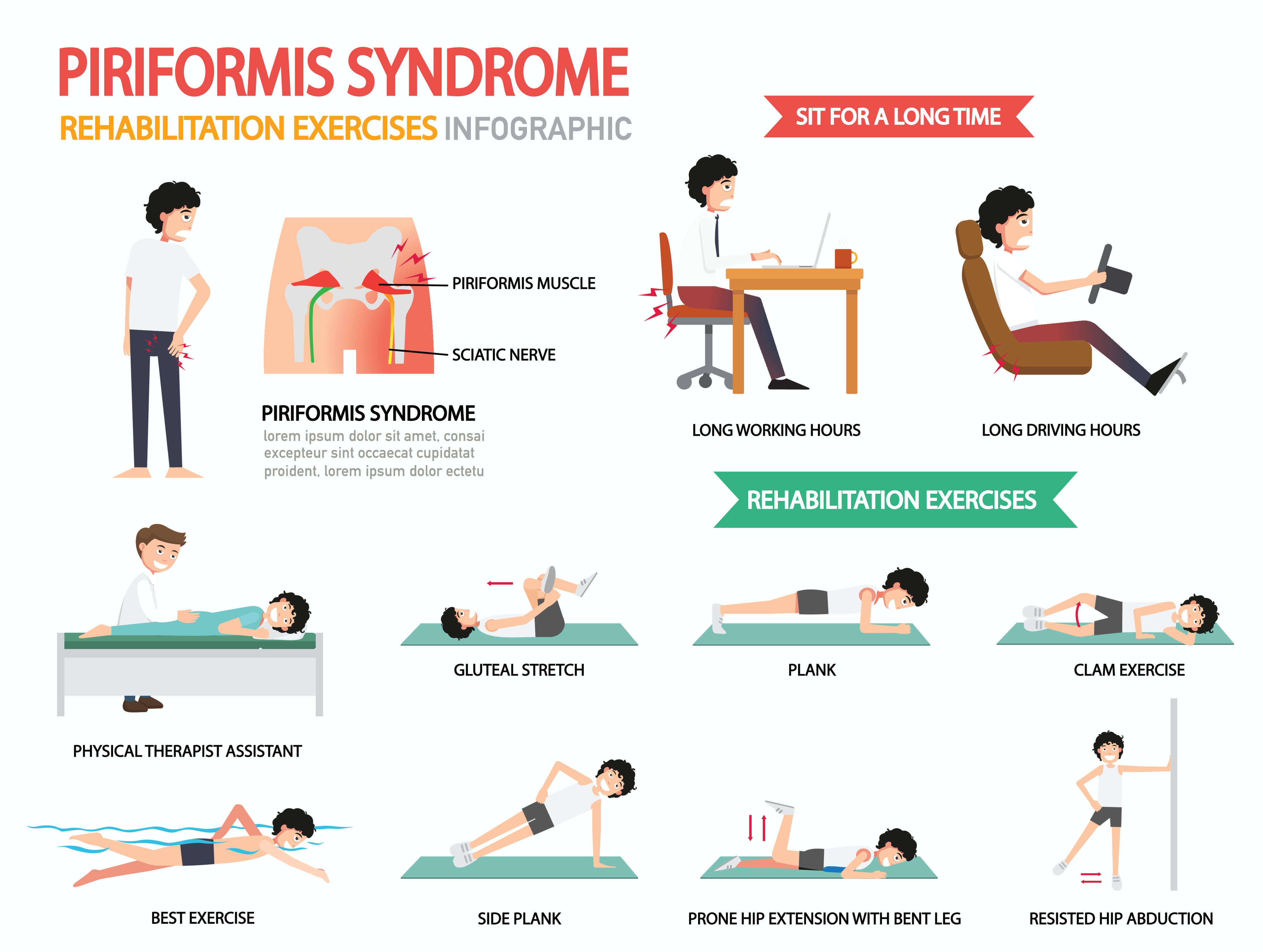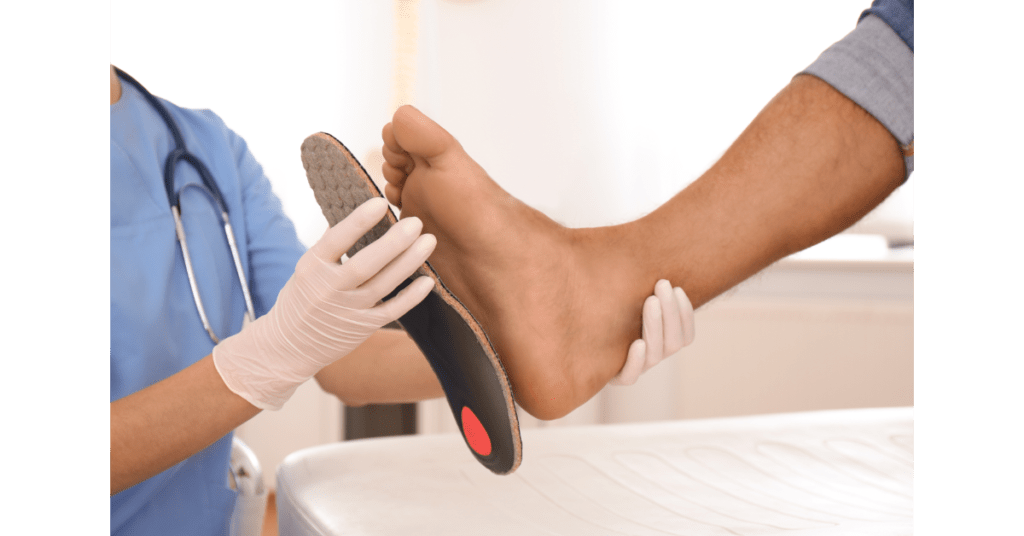What is Piriformis Syndrome?
Piriformis syndrome is a neuromuscular condition. This occurs when the piriformis muscle compresses the sciatic nerve, causing pain and discomfort in the buttocks and hips, sometimes extending down into the lower leg. The sciatic nerve attaches the spinal cord in the low back to the nerves and muscles of each leg. It runs under the piriformis muscle, located deep in the buttock area. Although Piriformis syndrome is a different condition, it can cause symptoms that resemble sciatica. Sciatica is caused due to lower spine problems, like a herniated disc, lumbar spinal stenosis or lumbar degenerative disc disease.
What Causes Piriformis Syndrome?
There are several causes of piriformis syndrome. Factors that contribute to this condition include Gender, Trauma, and Anatomical variation.
Piriformis syndrome is six times more common in women than in men. This is perhaps due to anatomical differences. Sitting, particularly on hard surfaces, for too long over time, can directly compress the sciatic nerve. The condition is also called wallet sciatica or wallet neuritis. Other causes are Direct trauma or blow to the buttocks causing inflammation and enlargement of the piriformis muscle, which can irritate the sciatic nerve, muscle spasms which can irritate the sciatic nerve, Previous injuries or surgeries to the area, such as a hip replacement and other Long-term, repetitive strain or overuse (whether occupational like truck driving or recreational, like long-distance walking, running, rowing or cycling). Anatomical variation can occur when the sciatic nerve runs through the piriformis muscle rather than under it and Dysfunction of the piriformis muscle due to altered biomechanics of the low back, legs, or pelvis.
What are the Signs and Symptoms of Piriformis Syndrome?
Pain in the buttock or hip area that comes and goes is the most common symptom of this condition. This pain can become serious. Other symptoms are Numbness and tingling and/or radiating pain from the buttock down into the leg, Pain that is worse with sitting or standing for too long, squatting, or climbing stairs, Low back pain, Pain with bowel movements, Painful intercourse (mostly in women) or Tenderness in the buttock when pressed.
How is Piriformis Syndrome Treated?
Since the symptoms of piriformis syndrome are similar to sciatica, it can get misdiagnosed. The earlier the diagnosis of the condition, the less likely it is to develop serious pain. The treatments for piriformis syndrome mainly consist of Physiotherapy, Medications, and Surgery.
Non-steroidal anti-inflammatory drugs (NSAIDs), like Advil, Motrin or Aleve, Topical medications such as creams, sprays, gels or patches, Muscle relaxants, Injections of anesthetics, corticosteroids, or botulinum toxin. If other less invasive treatments have not helped, surgery is necessary. Physiotherapy is an essential part of rehabilitation. Physiotherapy is drug free and non-surgical treatment. It aims at reducing pain, preventing pain, regaining strength, and increasing mobility and function. Based on individual needs, physiotherapy for piriformis syndrome can include: Stretching, strengthening, and range of motion exercises, Activity modification and functional retraining, A personalized exercise routine, Traction, Patient education (including postural and ergonomic education) and Cross-disciplinary pain-relieving therapies. The latter consists of Interferential current therapy (IFC) or TENS therapy, Therapeutic ultrasound, Manual therapy, Acupuncture, Massage therapy, and Occupational therapy. At our clinic we have notice by using Simply Align Technique which includes advance physical modalities, activity modification and specific exercises we have faster, longer lasting results with reduced healing time.

Are you looking for physiotherapy for piriformis syndrome in Scarborough? Book an assessment with our Clinic at EAST (Scarborough) 3630 Lawrence Ave E, Toronto, ON M1G 1P6 Today.
Can Piriformis Syndrome Go Away on Its Own?
Piriformis syndrome can go away if the treatment is correct. However, the symptoms can recur, if the treatment does not include activity modification. Changes can be made to make day-to-day living easier. For example, Avoiding or Minimizing activities that exacerbate the pain, Avoiding sitting for too long (over 30 minutes), particularly on hard surfaces, Switching from high-intensity activities like jogging to low-intensity activities like swimming once the pain is gone, Applying heat and cold therapy and Using an ergonomic chair at work and home.
Can You Prevent Piriformis Syndrome?
Yes. You can prevent or reduce the chance of developing piriformis syndrome by taking certain steps like Exercising regularly, (including stretching exercises such as yoga or tai chi for at least 30 minutes a day), Staying active (avoid staying in one position for too long), Warming up before exercise and stretching afterward, Eating a non-inflammatory diet (avoiding sugar and processed and refined foods) and drinking plenty of water, maintaining a healthy weight and Using an ergonomic chair at work and home.








